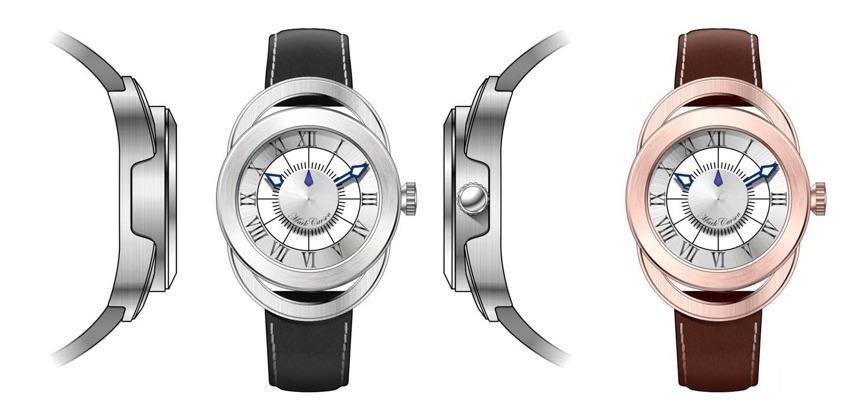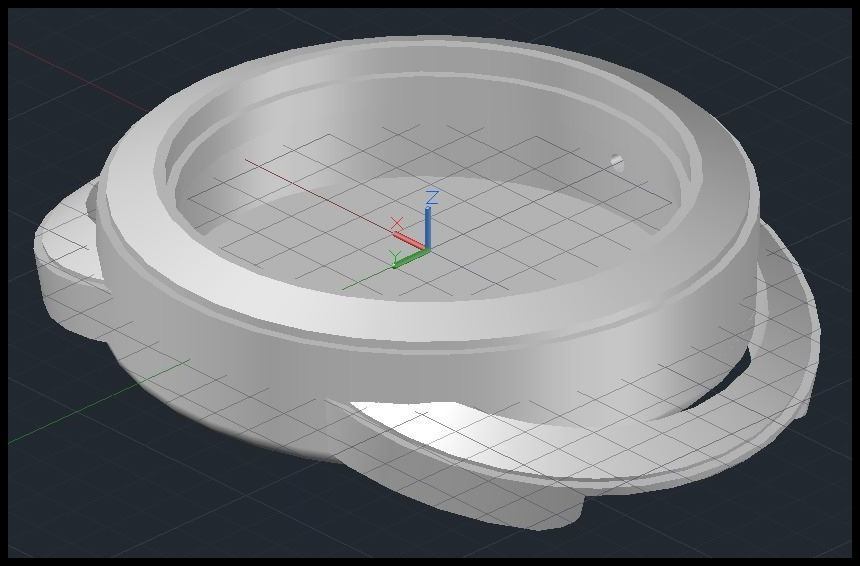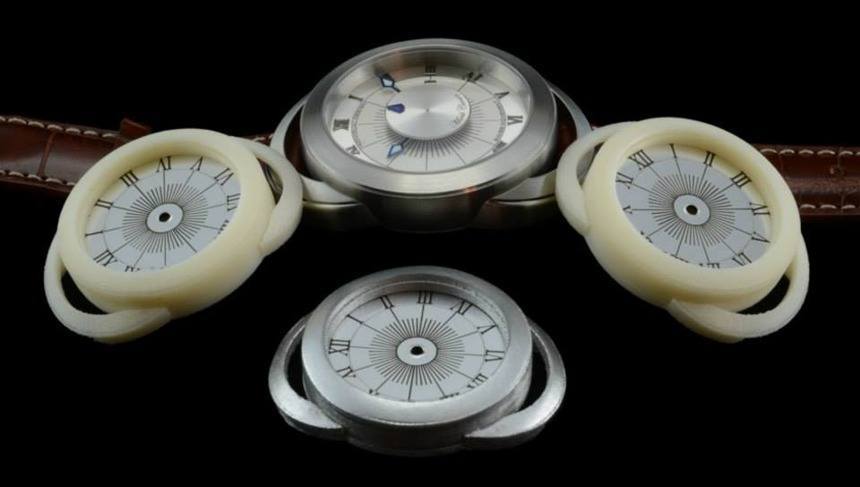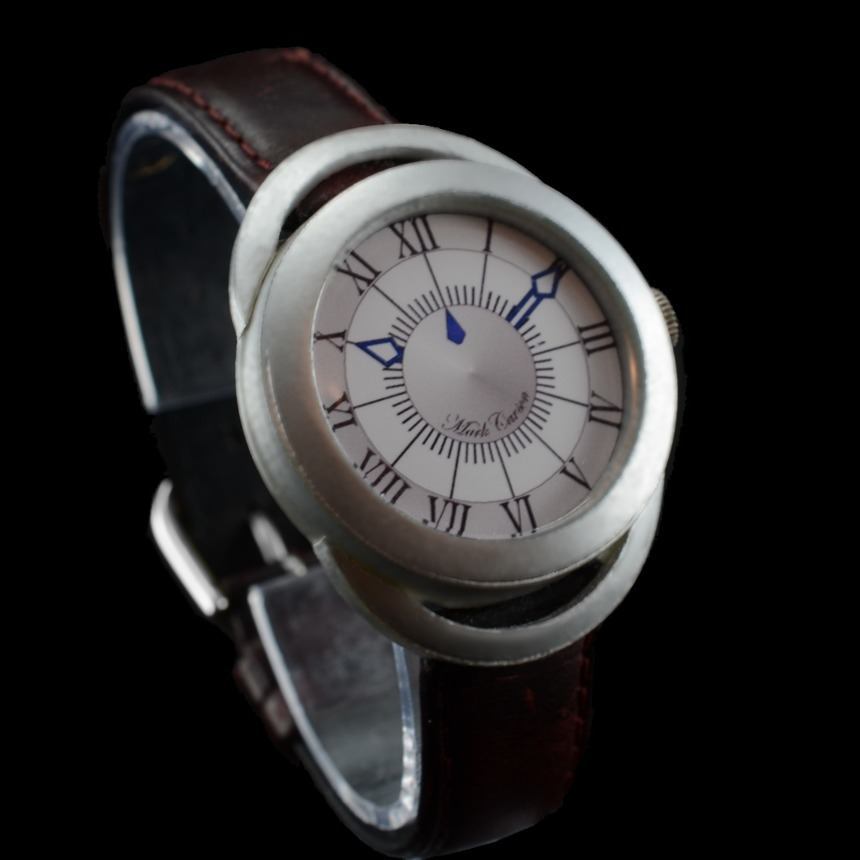In 2010, I started Individual Design (now marketed as Mark Carson) with the goal of producing uniquely designed, high quality watches at affordable prices. It took 2 years to develop and begin deliveries of my men’s Ka La (“The Sun” in Hawaiian) watches. Ever since those first customer deliveries in 2012, people have been asking for a ladies version of these unique watches with their signature case design and spinning seconds disk.
With the design goals of a more modest size and price point, I began designing a Ladies Ka La Watch and I am now ready to begin production as soon as funding is secured. With a unique design inspired by the sundial, these ladies watches are elegant enough for a night out, while their contemporary design makes them suitable for daily wear. The retail price will be $400 when these watches are sold at selected fine watch and jewelry stores.
OK, enough with the marketing-speak. Let’s cut to the chase: go to my Kickstarter Project Page and sign up for an Early Bird “reward” so you can buy one of these unique watches for just $150 USD (plus shipping). I know they call you “supporters” and the products “rewards.” But let’s be clear, you are my customers and I have a great product to sell. If enough of you buy this unique, high quality watch, it will get made. Otherwise it won’t. Order early, order often!
- Case Material: 316L Stainless Steel
- Case Size: 34 mm wide by 8.4 mm tall by 45 mm overall length
- Crystal: Sapphire
- Movement: Swiss Ronda 763 quartz
- Straps: Leather with quick release pins (2 straps included with each watch)
While aBlogToWatch does cover watches from many different price segments (from more affordable to ultra high-end), it also primarily covers men’s watches and considerably fewer ladies’ watches. I understand that most readers of this post will be guys with real world watch budgets, and so here is your chance to pick up a nice watch for your lady for a reasonable price. Just know that it will be a late Spring delivery. Now is the time to “put up or shut up” when it comes to supporting indie brands – and you can do it at a price point with little pain. I’m counting on ya guys (and gals)! Go here (Kickstarter) and buy a watch.
The Watch Design Process
Ariel has been after me to write about the process of designing and bringing a watch to market as a boutique brand. And someday I will write an even longer post about the 3 year process that produced my men’s Ka La watches. But for now, I will describe the (ongoing) process with this ladies watch and the process in general.
Unlike marketing (sales) driven big brands who are necessarily concerned with sales and profits, I think small indie brands start with a design or desire that is more personal. They want to build what they personally want to wear. Sure, you need to sell them, but that’s not what drives the design process for passion driven small brands. Which is to say, rather than looking at what sells well by the “big boys” and slavishly copying it, you often get designs which are more original and less derivative with boutique brands and even with smaller but truly independent brands who are seeking to stake out a place in the crowded watch market with unique timepieces. In this case, I wanted to create a ladies version of my Ka La watch which my wife and daughter could enjoy wearing. I even pressed my daughter into service by modeling the prototype watch in the photos.

Where do you start? With a design of course. Pen and paper, or even a CAD program, these days, where you can try out concepts. I find that while I do use pen and paper at the very start (as it’s far easier for me to sketch a perspective drawing than to do the same in 3D CAD), I move to a 2D drawing program as soon the design is well formed in my head. I have used Corel Draw for over 20 years, so I’m most fluid when using it. But any vector drawing or drafting program will work, so long as you can get down to fractions of a millimeter. And later produce PDF files for dial and hand manufacture and also output for 3D CAD which will be used for the case design. I use the “Layers” feature in Corel Draw extensively so that I can stack up the elements (strap, movement, case, dial, hands, crystal, etc.) and work on each part of the “layer cake” separately. Also, you can create alternate dials and hands or even cases and then switch them on/off for display during the design process. Also, this lets you later export just the dials and then the hands into (vector) PDF files for manufacturing. You don’t just make a single layer drawing by eyeballing it. Everything is precisely dimensioned at every stage after the pen and paper drawing.
So where does it start at the nuts and bolts level? You have to simultaneously select your movement based on your design and mold your design to the selected movement. It’s very symbiotic early on. The actual drafting/drawing of the design starts once the movement is identified. Besides the width (often, but not always, a diameter) and overall height, you have consider individual height aspects. I determine where the winding stem is in relation to the overall height using movement manufacturer spec sheets. I designate the winding stem as the ‘zero’ or baseline point as the crown position on the case is based on the stem.
Downward from there, you determine how much the case will have to extend below the crown’s center line. The part above the stem center line has more to consider. You need to know your dial thickness (usually 0.40 mm), and factor that into the height from the stem center to where the dial will seat up against the case (assuming the movement is mounted through the back of the case). Then, you have to know the “hand fitting” dimensions (post/pinion height), which is the height above the movement and dial, plus the “security” or clearance above the seconds hand needed to clear the bottom of the top crystal. Add in the crystal thickness, and you have the vertical dimensions all set. Well, almost. You also need to know where a movement ring/holder (if used) will vertically affix to the movement. Then, you have to dimension a stepped/shoulder section into the inside of the case that the movement ring will seat up against.
Hopefully, you have already considered the movement’s width/diameter when the initial design phase was going on. Generally, the movement can be smaller than the dial but not larger (unless your case will ‘hide’ this extra width which implies a wider bezel and correspondingly thinner case walls). These days, watches have grown in diameter faster than movement designs, so movements are often smaller than dials, and movement rings are not uncommon.
After the movement selection, the materials used for case construction have the largest cost impact. Those $10 watches aren’t going to use 316L (surgical grade) stainless steel or have domed sapphire crystals with anti-reflective coatings. Quality materials cost more – simple as that. A rule of thumb is that every dollar you add in a part’s cost results in at least 4 dollars more in the retail price of the watch – for reasons I can go into another time.

So, now you have a 2D drawing and a probably a few hand drawn perspective sketches. Do you like solid modeling in 3D CAD programs?
Why you need to do this or not do this: your case maker can make their own 3D CAD drawings from your 2D drawing (showing multiple views), so strictly speaking, you don’t have to make your own 3D CAD drawings. But what looks good in 2D, often is not quite right on the wrist. So I strongly suggest making prototype cases before committing your design to hundreds of units in metal, only to find it looks weird or does not fit well.
If you don’t want to do the 3D CAD yourself, you can probably hire someone to do it for you, but there is the fear that they may not create in 3D exactly what you pictured in your mind. I suffer through doing 3D CAD myself, but it’s a struggle as that’s not something I do everyday. Either way, you need to export your case design as a STL (stereolithography) file.

I have used RedEye (now using their parent company’s name – Stratasys) in the past for my ABS or PLA plastic prototype cases. You upload STL files to their website, and a couple of weeks later, you will see your design as a physical item. It’s an exciting point in the process when you have a case in your hand!
In the past, I avoided getting a 3D printer, such as a MakerBot, because historically, their resolution has not been fine enough for watch cases which are designed down to 1/10 of a millimeter. I am currently supporting the Rapide Lite 3D Printer crowd funding project on Indiegogo, which has superior resolution and a good price. I expect to receive my 3D printer later this month. I will soon know if I can now do my case prototyping in-house or not.


